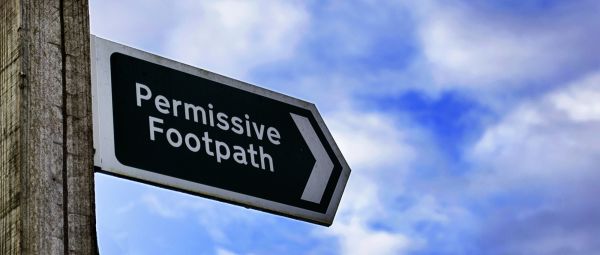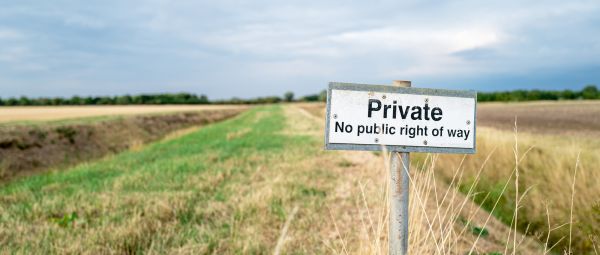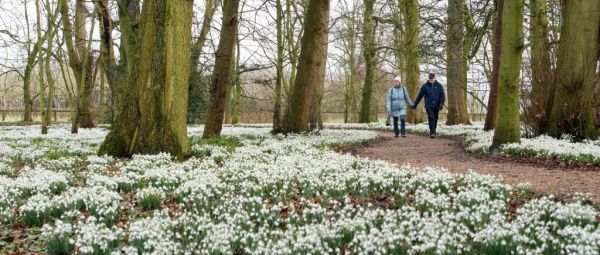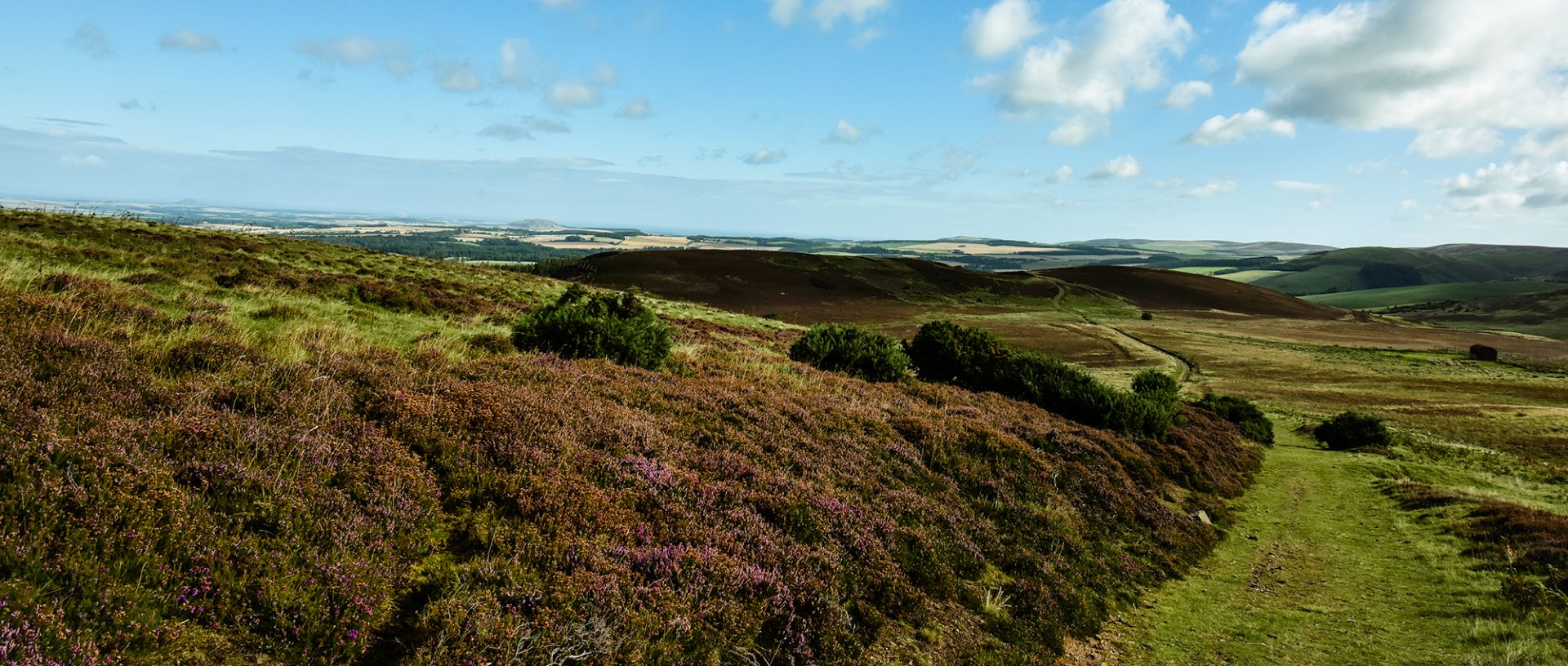Understanding public rights of way
Our guide to staying on track

There are countless reasons why Britain is a paradise for walkers. But one of the biggest boons is our amazing network of footpaths and other routes for ramblers. In fact, there’s such an array of trails, tracks, paths and byways that working out which is which can be confusing. So here’s our easy-to-follow beginners’ guide to rights of way and access law.
When is a path not a path?
When it’s a BOAT! No, that’s not a joke. A byway open to all traffic (BOAT) is one of four types of designated right of way in England and Wales. All of them are protected in law to the same extent as public roads. The rules in Scotland are a little different, and we’ll look at those later.
A public footpath is, as you might expect, a path that can be used only by walkers and runners. That right doesn’t extend to cyclists, horses or vehicles.
A public bridleway (or bridle path) is accessible to cyclists and horse riders as well as walkers. It may be wider than a public footpath.
A restricted byway extends the right of access to horse-drawn carriages. Not such a common thing today, but useful in days gone by!
Finally, a BOAT can be used by motorised vehicles as well as bikes, horses and of course walkers. That doesn’t guarantee that it’s well surfaced or as wide as a road, though.
Wheelchairs and mobility scooters are allowed on all of these, though not all rights of way have suitable surfaces.
A public right of way can be designated if it’s deemed to have been used uninterrupted for at least 20 years.
So not all paths in England and Wales are public rights of way?
Correct. For example, you might come across a route on private land that is what’s called a permissive path. That means the landowner has granted permission for the public to walk along it. Often you’ll find a sign where the path begins, indicating its status. However, the landowner has the right to withdraw that permission.
Towpaths by rivers and canals are typically accessible to walkers and, often, cyclists. Some, but not all, are public rights of way. Designated cycle tracks may also be shared with walkers.
What can I do on a public right of way?
The language of the law is a bit old-fashioned. It says you can ‘pass and repass along the way’. In other words, you can walk (or run) on the public right of way. And you can stop to rest, watch birds, admire the view, take photos, eat or drink. You can take a pram or a dog, too, as long as dogs are kept under control.
You must stick to the path unless it’s illegally blocked. Otherwise, if you deviate from the right of way in England or Wales, you are trespassing. And stopping for long periods on the path is also not allowed, particularly camping.

What are the rules in Scotland?
Historically, in Scotland people have had a broader traditional right to walk across most types of land. It’s a bit like the famed ‘everyman’s right’ or ‘freedom to roam’ in parts of Scandinavia, the Baltic states and Central Europe.
This right was codified in the Land Reform (Scotland) Act 2003, establishing rights of access to most land and inland water. That rule applies to walkers, cyclists, horse riders and canoeists, providing they use that right responsibly. You also have a right to camp, as long as you stay well away from roads and buildings and leave no trace. You can find details of your rights and responsibilities according to the Scottish Outdoor Access Code.
What that does mean is that rights of way in Scotland are protected differently. Most also weren’t mapped in such detail as in England and Wales. That’s being addressed, and some 13,050 miles of ‘core paths’ have been designated to improve and ensure continued access. In addition, with the help of more than 250 volunteers, Ramblers Scotland is developing a comprehensive Scottish Paths Map. You can find the results so far on the interactive online map.
Do I always need to stick to a path in England and Wales?
No, you don’t. However the places you can roam freely without following paths are limited. These areas, known as open access land, are mostly on moors, mountains, heaths and downs. They also include registered common land, most Forestry England woodlands and parts around the England Coast Path. The commons on Dartmoor are open access land, for example. In total these areas cover over a million hectares of land (about 8% of England and 22% of Wales).
Open access land is usually indicated on OS Explorer maps with a yellow wash. On the coast, it’s a magenta wash. Open access woods are marked in a paler yellowy-green, edged with a salmon-coloured band. Some land uses are excluded from this right to access such as golf courses, houses and their gardens, and farmland currently under cultivation. In England and Wales, the right doesn’t include camping, cycling, horse-riding or water sports unless the landowner has granted permission.
How can I find rights of way and other paths?
Signposts indicating public rights of way are installed by the local highway authority, usually the county council or unitary authority. These stand where the route leaves the surfaced road. Additional waymarks are placed where the route is unclear or where multiple routes cross.
Each highway authority holds what’s called a ‘definitive map and statement’ of rights of way in its area. You might be able to find a copy online with your local council. Alternatively, rights of way are shown as dashed green lines on OS Explorer maps, or magenta on Landranger maps. Other paths are also shown on OS maps as dotted or dashed black lines, with green (Explorer) or magenta (Landranger) dotted lines indicating other routes with public access. These maps aren’t perfect, but they are fantastic resources for finding paths and planning your walks.

What do landowners have to do?
By law, in England and Wales landowners have to keep public rights of way free from obstructions. So they can’t install fences or even stiles or gates without permission. And they have to keep existing stiles and gates in good repair. They must ensure that paths are kept clear and obvious when crops are planted, with some short-term exceptions. If a right of way is blocked by a fence or another obstruction, try to find a sensible, non-damaging route around. When you get home, report it to your local highway authority. Also report misleading notices that seem designed to deter you from walking along that public right of way.
In Scotland, landowners and managers must respect access rights. That means managing land and water in a way that doesn’t unreasonably hinder or block walkers and other users.
…and what do I have to do?
Most of all, make the most of our wonderful walking environment. But also remember to walk responsibly. We want to preserve these special routes and places for future users and landowners alike. Don’t damage crops or natural vegetation, nor harm or disturb wildlife or domestic animals. Take great care to avoid starting wild fires, and take all litter (including dog mess) home with you. If you find litter along the way, why not bag it and take it home, if it’s safe, to make the walk all the more enjoyable for the next person.
Enjoy your walk!
We’ve got lots more information about where you can walk across England, Scotland and Wales plus ideas for hundreds of wonderful long and short, easy and challenging walking routes. And we have plenty of advice on what to do if you encounter problems on public rights of way.
All images © Getty
.jpg?itok=oWplmXJh)
Ramblers walking groups near me
With over 500 Ramblers groups right across Britain there’s probably one (or more) near you. Here’s how and why you should join one for a sociable stroll.

How can walking improve my mental health?
Taking a regular stroll can make you feel happier, calmer, less stressed and more energetic. It’s even better enjoyed with a group of like-minded walkers.

10 best dog walks
Great places to explore with your four-legged friend, from thrilling heights and fantastic forests to sweeping beaches.

Campaign with us
We campaign to remove barriers to walking and we step up to protect the places we love to wander.